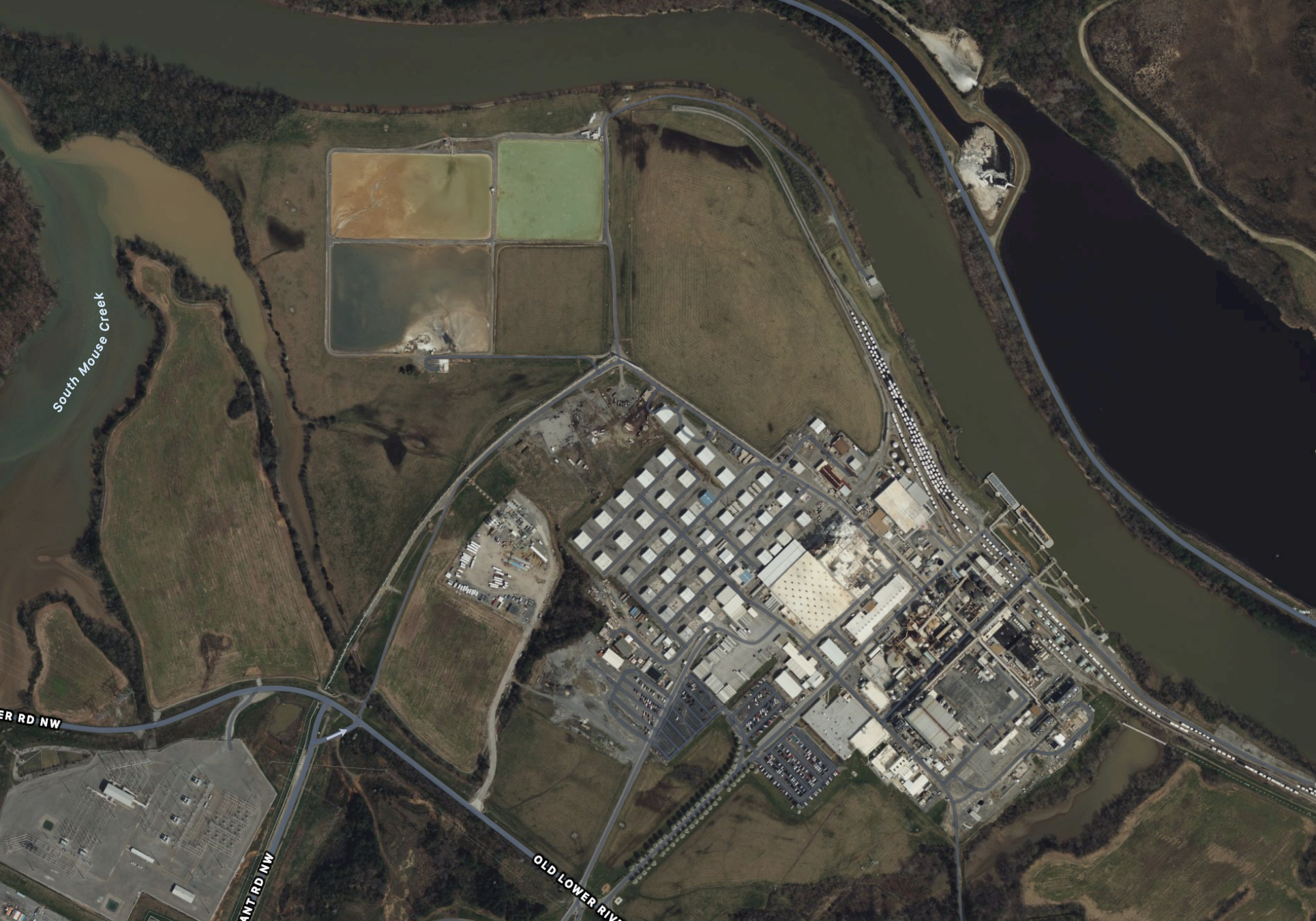History of the Olin Corporation’s Footprint in Charleston, Tennessee
Olin Corp. in Charleston, Tn.
THE FACILITY
This plant facility has been in operation since opening on May 23rd, 1962. Situated on the the banks of the Hiwassee River, in Charleston, Tennessee, this facility has been owned by a number of different entities. Starting out as Mathesion Alkali Works, the facility merged in 1954 with Olin Chlor Alkali Products. The facility is currently owned and operated by the Olin Corporation. The surrounding communities of Charleston, and the city of Calhoun across the river, have a combined population of 1,200 people, most within a 3 mile radius of the plant. This plant had an estimated two hundred seventy-three (273) full-time employees, as of the 2020 census.
The Olin Corporation’s facility covers an area of 1,029 acres and includes roughly four miles of waterfront on the Hiwassee River and South Mouse Creek. It has been the subject of several complaints and has been responsible for a major release of chlorine into the Hiwassee River. In spite of these issues, Olin Corporation remains in operation to this day.
The Olin Corporation’s facility has been in operation since 1962, though it now utilizes a different method to produce chlorine. Originally, the site was using the mercury cell method. This mercury cell process utilized recirculated elemental mercury. By using elemental mercury, employees and contractors were potentially exposed to high levels of mercury and mercury vapor. This mercury vapor contaminated the entire production facility.
In 2011, the contracted firm Robins & Mortin began the process of converting the highly toxic mercury cell system to a membrane system. The new membrane system eliminated the need for mercury in the production process. As mercury forms an amalgam with every other metal it comes in contact with, the entire plant was and continues to be contaminated. Many contaminants still remain in the surrounding soil, surface water, aquifers and structures. The primary contaminants left behind are volatile organic compounds (VOCs), which pose significant health risks to those exposed and can harm human health and contaminate property or the environment.
Currently we are investigating claims of potential mercury contamination to both people and property as a result of various plant operations. These operations utilized thousands of pounds of elemental mercury to produce chlorine and other products.
OPERATIONS
The process of mercury-cell chlor-alkali manufacturing involves the use of thousands of pounds of elemental mercury. In the manufacturing process, mercury is used as a transport mechanism in the production of chlorine gas (Cl2). Typically, production occurs in a closed system; one that prevents the ingress or egress of chemical compounds into or out of the system. However, through the process of maintenance, decommissioning, demolition, or other “upset” conditions wherein the interior of the system is exposed to the external environment, risks of exposure increase exponentially. Mercury vaporizes (evaporates) at room temperature into an odorless and non-irritating vapor, making it impossible to detect without specialized equipment and testing. Often, gaseous or liquid mercury is unintentionally brought home by workers on their skin, clothes, or tools from the plant, unintentionally exposing their families to this toxic metal.
EPA FINDINGS
According to the EPA, the Hiwassee River’s watershed is “impaired” due to the detection of mercury in the water. However, no major reports have been published by the EPA regarding the Charleston plant or the environment surrounding it.
Contact Us
If you or a family member worked at the Charleston, Tennessee Olin facility please fill out this initial contact form. After you complete this form a team member will contact you to further investigate the extent of your mercury exposure.

